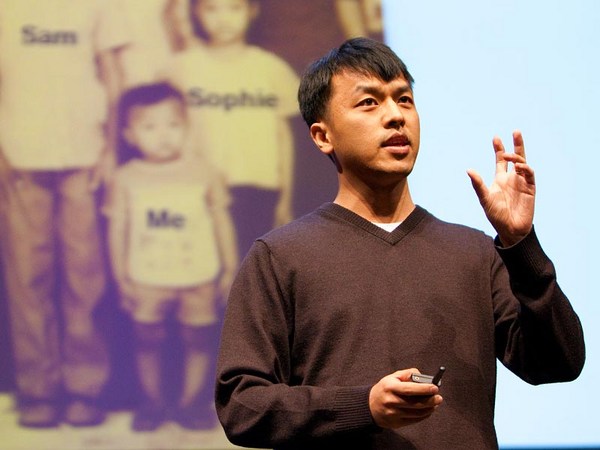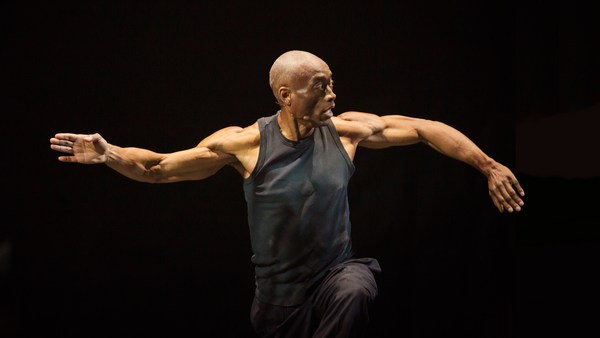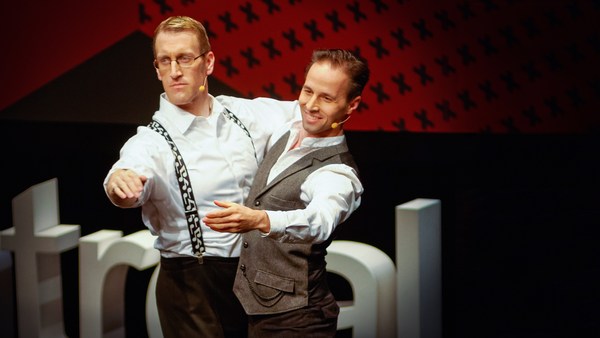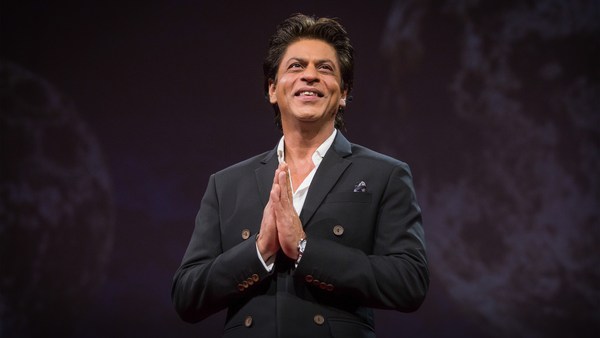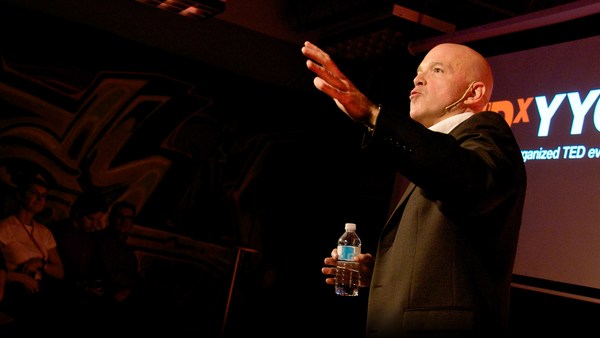"Robam kbach boran," or the art of Khmer classical dance, is more than 1,000 years old. It was developed as a prayer in movement for rain and fertility, and a prosperity that this meant for an agricultural society. Dancers who were both men and women were offered to temples where they served as living bridges between heaven and earth. Their dancing bodies carried the prayers of the people up to the gods, and the will of the deities was delivered back through them to the people and the land.
There are a lot of curves in Khmer dance. Our backs are arched, our knees are bent, our toes are curled, our elbows are hyperflexed and our fingers are curved backwards. All of these curves create a serpentine impression, and this is important because before the introduction of major religions, Khmers, and people all over the world practiced animism. Serpents were especially important in this belief system because in their fluid, curvilinear movement, they mimicked the flow of water. So to invoke the serpent in your dancing body then was to conjure the image of rivers cutting across the earth: inspire the flow of life-giving waters.
As you can see then, Khmer classical dance is a transformation of nature, of both the physical world around us and of our own internal universe. We have four primary hand gestures that we use. Can we do them together? Yeah? OK.
This is a tree. That tree will grow, and then it will have leaves. After it has leaves, it'll have flowers, and after it has flowers, it'll have fruit. That fruit will drop and a new tree will grow. And in those four gestures is the cycle of life.
These four gestures are then used to create a whole entire language with which dancers express themselves. So for example, I can say, "I." "I." In dance that would be ... "I." Or I can say ... "Hey you, come here, come here." In dance ... "Come here," or, "Go, go."
(Laughter)
"Go." And everything from ... love ... to sadness, to --
(Stomping)
anger can be expressed through the dance as well.
There's a certain magic in the way that things are filtered, transformed and put together to create limitless possibilities in art. The Khmer word for art, silapak, in fact, at its root, means "magic." The artist -- the silapakar, or the silapakarani, then, is nothing short of a magician. I am very proud to say that I belong to a long line of magicians, from my teacher, Sophiline Cheam Shapiro, to her teachers who were stars in the royal palace, to the ancient dancers of Angkor and to the primal villagers from which the art form originally took life.
That said, our cherished heritage was once almost completely destroyed. If you are wearing glasses, please stand up. If you speak more than one language, please stand up. If you have light skin, please stand up. Your glasses meant that you could afford health care. That second or third language you spoke indicated your elite education. Your light skin meant you didn't have to work beneath the sun. Under the Khmer Rouge, who took over Cambodia from 1975 to 1979, we would all be dead now, targeted because of our assumed privilege. You see, the Khmer Rouge looked to Cambodia, and they saw centuries of rigid inequality. The king and the few elites around him had all the pleasures and comforts of the world while the mass majority suffered from backbreaking labor and harsh poverty. You don't need a history book to see that this is true.
The Khmer word for "I," for "me," is khnhom. This very same word can also mean "slave" and dancers were in fact known as knhom preah robam, or "slaves of the sacred dance." The Khmer Rouge sought to end slavery in Cambodia, yet somehow they turned everyone into slaves to do it. They became the oppression that they sought to end. They evacuated the capital and forced people into labor camps. They tore families apart and brainwashed children against their own parents. Everywhere, people were dying and being killed, losing their lives from disease, overwork, execution and starvation. The result of this is that an entire third of Cambodia's population was lost in less than four years, and in that number were 90 percent of Khmer dance artists. In other words, nine out of 10 visions for the tradition and future were lost.
Thankfully, however, it was my teacher's teachers, Chea Samy, Soth Sam On and Chheng Phon, who would lead the revival of the art form from the ashes of war and genocide: one student, one gesture, one dance at a time. They wrote the love, magic, beauty, history and philosophy of our lineage into the bodies of the next generation.
Nearly 40 years later, Khmer classical dance has been revived to new heights. Yet somehow it still exists in a vulnerable environment. The disastrous effects of war still haunt Khmer people today. It is written in our bodies, manifested in a genetic passage of PTSD and in families facing cyclical poverty and immense cultural rifts and language barriers.
Yet beauty is a most resilient thing. Beauty has this ability to grow anywhere and everywhere at any time. Beauty is what connects people through time and place. Beauty is a liberation from suffering. As Khmer artists work to revive our culture and country, we find that there are many paths in which to move forward into the future. And in a tradition where we often don't know the dancer's names, who they were, what their lives were like, what they felt, let me propose that we move forward honestly and openly from "khnhom." Khnhom not as in slave, but as in conscious service. Khnhom: "I," "me," "flowering."
My name is Prumsodun Ok. I am Khmer, and I am American. I am the child of refugees, a creator, a healer, and a builder of bridges. I am my teacher's first male student in a tradition understood by many as female, and I founded Cambodia's first gay dance company. I am the incarnation of the beauty, dreams and power of those who came before me. The convergence of past, present and future, and of individual and collective.
Let me then play that ancient and ageless role of the artist as messenger, by sharing the words of Chheng Phon "A garden with only one type of flower, or flowers of only one color, is no good." This is a reminder that our strength, growth, survival and very existence, lies in diversity. It is, however, a message of courage as well. For a flower does not ask for anyone's permission to bloom. It was born to offer itself to the world. Fearless love is its nature.
Thank you.
(Applause)

